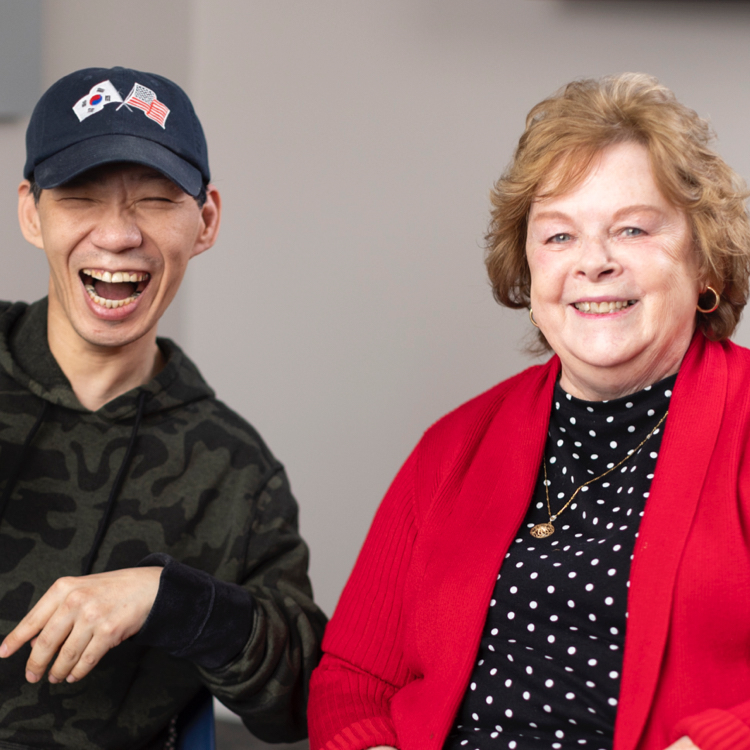Treatment for Bone Loss & Preparation for Dental Implants
The face and jaw bones may experience bone loss due to a number of reasons, from congenital defects to facial trauma or missing teeth. Dr. Robert Lucas, Dr. Garrett Seghi, and Dr. Eric Murnan are board-certified, dual-degree experts who can perform a variety of bone grafting techniques to repair the jaw and face, restoring structure and functionality to the oral and maxillofacial regions. Bone grafting is also often used prior to implant placement to create a solid foundation for dental implants.Contact Oral Surgery & Dental Implant Specialists of Cincinnati to schedule a consultation with our oral health experts. We will discuss your treatment options and goals, design a custom treatment plan, and determine if bone grafting is right for your oral health needs.
How Does a Bone Graft Work?
When receiving a bone graft, your surgeon will insert bone grafting material in the area where more bone is desired. This material acts as a scaffold that your body will form new bone cells to heal around. The result is healthier, stronger bone.
There are different types of bone grafts that are made of natural or synthetic materials. Your oral surgeon will determine the right type of graft for your condition. The different materials used in bone grafting includes:
- Allografts, which are made of donated human tissue
- Xenograft, which are made of animal tissue
- Autograft, which come from a different part of the patient’s body
- Alloplastic graft, which is made of synthetic material
Bone Grafting Treatments
During your first visit, your oral surgeon will create a custom care plan based on your individual needs. We may take 3D scans of your mouth and face to assess your facial structures and detect any hidden oral health concerns. Many patients who receive dental implants also receive a bone graft to improve the stability of the jaw and implant. If bone grafting is a part of your treatment, your surgeon will explain the bone graft procedure and what you can expect.
We offer many types of anesthesia and sedation for your comfort. Before your procedure, your oral surgeon will help you select the right option to ensure your comfort.
Ridge Augmentation
The alveolar ridge is the bone that surrounds the teeth roots. When a tooth is missing, there is an empty socket left within the ridge that often heals on its own. In some cases, the socket breaks and cannot heal, and the size and shape of the ridge deteriorates further over time. Ridge augmentation is performed following tooth extraction to rebuild the alveolar ridge and prepare for implant placement.
Sinus Lift
Behind the upper teeth and behind the cheeks are the maxillary sinuses, which are air-filled spaces. Some roots of upper teeth extend into the sinuses, and when these teeth are extracted or fall out, only a thin wall is left that separates the sinuses from the mouth. This thin wall is not sufficient for supporting dental implants, therefore a sinus lift is performed. This procedure involves lifting the sinus wall and inserting a bone graft, creating a strong foundation for dental implants.
Socket Preservation
After a tooth is removed, the surrounding bone and gums may recede. This can cause visible changes as the jaw deteriorates, and existing teeth may shift out of position into the open space. A socket preservation can be performed following tooth extraction to maintain the size and shape of an empty tooth socket and minimize bone loss. Socket preservation also makes future implant placement easier.
Major Bone Grafting
Major bone grafting may be necessary to treat conditions that result in large skeletal defects, such as facial trauma incidents, congenital defects, tumor surgery, or other diseases. The patient’s own bone is often used to repair large defects and can be harvested from one or more donor sites throughout the body, such as the skull, knee, or hip. Our surgeons perform major bone grafting procedures in a hospital.
Bone Morphogenic Protein (BMP) & Platelet-Rich Fibrin (PRF)
Bone morphogenic protein (BMP) is a protein naturally found within our bodies that induces cells to form new cartilage and bone. Platelet-rich fibrin (PRF) is rich in fibrin, platelets, and growth factors which also help your body heal.
BMP and PRF can be harvested via a small blood sample and applied directly to a surgical site to jump start and accelerate your body’s healing process. Before your procedure, your surgeon will draw a small vial of blood and spin it in a centrifuge to separate the BMP and/or PRF, which are then administered to the surgical site during the procedure.
These healing factors can help protect tooth extraction sites from infection by enriching the area with protein. Patients who receive BMP or PRF may experience shorter healing times and less post-surgical discomfort. Our oral surgeons proudly offer these healing factors to our patients to achieve faster recoveries and better treatment outcomes. We are happy to discuss these options with you during the consultation.
Types of Anesthesia
Learn more about the types of anesthesia and sedation options available.
Bone Grafting in Cincinnati & Mason, OH
During your consultation with one of our board-certified oral surgeons, we will create a custom care plan and determine if bone grafting is a part of your treatment. Schedule your appointment at one of our offices in Cincinnati and Mason, OH, to learn more about bone grafting and begin your journey to better oral health.
Hear From Our Patients
Cincinnati’s Destination for Oral Surgery Excellence
At Oral Surgery & Dental Implant Specialists of Cincinnati, we pride ourselves on delivering exceptional patient care and clinical outcomes to the greater Cincinnati area. Contact our offices in Cincinnati or Mason, OH, to schedule a consultation and see how oral surgery can improve your smile, confidence, and health.









